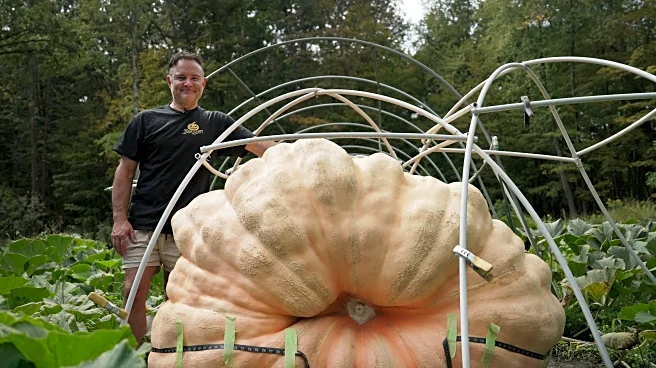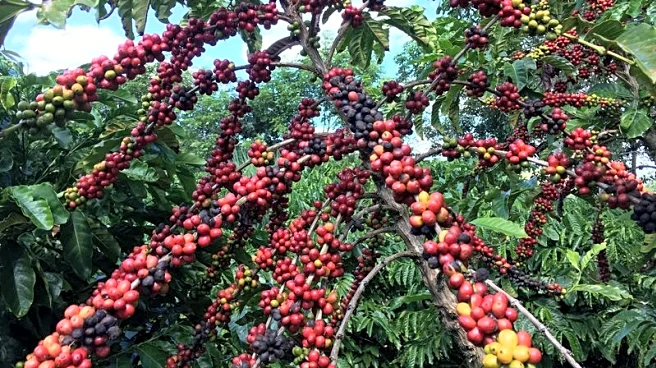What's Happening?
Tony Scott, a semiconductor engineer from Wappingers Falls, New York, has successfully grown a giant pumpkin weighing 1,931 pounds, earning third place in a competitive weigh-off. Scott has been nurturing giant pumpkins for eight years, using techniques such as feeding them fertilizer, covering them with blankets to maintain temperature, and using overhead sprinkler systems for watering. The pumpkins are grown from Atlantic Giant seeds, known for producing large fruits. Scott's method involves removing smaller pumpkins to concentrate nutrients and water into a single fruit, allowing it to grow larger. Despite their size, giant pumpkins eventually mature and stop growing due to their natural aging cycle.
Why It's Important?
The cultivation of giant pumpkins highlights the intersection of agriculture and competitive horticulture, showcasing the dedication and innovation required to grow such large fruits. This practice not only contributes to local agricultural traditions but also attracts attention at fall festivals and Halloween fairs, boosting community engagement and tourism. The techniques used by growers like Scott can inspire advancements in agricultural practices, particularly in optimizing water and nutrient use. Additionally, the popularity of giant pumpkin competitions can stimulate interest in gardening and plant science, encouraging more individuals to explore horticulture.
What's Next?
Following the weigh-off, Scott plans to display his giant pumpkin at various themed events, where it will be showcased or carved. This tradition of exhibiting giant pumpkins at public events helps maintain community interest and engagement. Scott's continued participation in these competitions may lead to further innovations in growing techniques, potentially influencing other growers. As interest in competitive pumpkin growing persists, there may be increased opportunities for collaboration and sharing of best practices among growers, fostering a community of enthusiasts dedicated to pushing the limits of horticulture.
Beyond the Headlines
The practice of growing giant pumpkins raises questions about the sustainability and environmental impact of such endeavors. While the focus is on achieving maximum size, considerations about resource use, such as water and fertilizers, are important. Additionally, the cultural significance of giant pumpkins in American traditions, particularly during fall festivals, underscores the role of agriculture in shaping cultural events and community identity. The ethical implications of using extensive resources for competitive growing versus food production may also be explored, prompting discussions on balancing tradition with sustainability.












